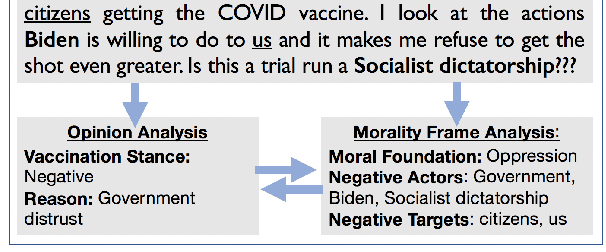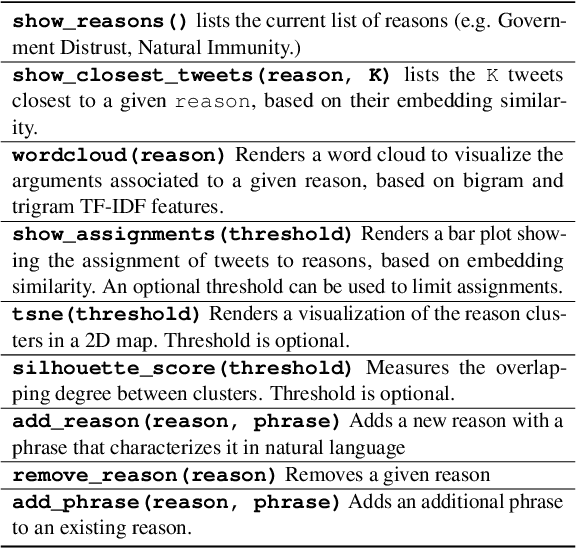Maria Leonor Pacheco
Explaining Puzzle Solutions in Natural Language: An Exploratory Study on 6x6 Sudoku
May 21, 2025Abstract:The success of Large Language Models (LLMs) in human-AI collaborative decision-making hinges on their ability to provide trustworthy, gradual, and tailored explanations. Solving complex puzzles, such as Sudoku, offers a canonical example of this collaboration, where clear and customized explanations often hold greater importance than the final solution. In this study, we evaluate the performance of five LLMs in solving and explaining \sixsix{} Sudoku puzzles. While one LLM demonstrates limited success in solving puzzles, none can explain the solution process in a manner that reflects strategic reasoning or intuitive problem-solving. These findings underscore significant challenges that must be addressed before LLMs can become effective partners in human-AI collaborative decision-making.
Can LLMs Interpret and Leverage Structured Linguistic Representations? A Case Study with AMRs
Apr 07, 2025Abstract:This paper evaluates the ability of Large Language Models (LLMs) to leverage contextual information in the form of structured linguistic representations. Specifically, we examine the impact of encoding both short and long contexts using Abstract Meaning Representation (AMR) structures across a diverse set of language tasks. We perform our analysis using 8-bit quantized and instruction-tuned versions of Llama 3.1 (8B), Phi-3, and Mistral 7B. Our results indicate that, for tasks involving short contexts, augmenting the prompt with the AMR of the original language context often degrades the performance of the underlying LLM. However, for tasks that involve long contexts, such as dialogue summarization in the SAMSum dataset, this enhancement improves LLM performance, for example, by increasing the zero-shot cosine similarity score of Llama 3.1 from 66.2% to 76%. This improvement is more evident in the newer and larger LLMs, but does not extend to the older or smaller ones. In addition, we observe that LLMs can effectively reconstruct the original text from a linearized AMR, achieving a cosine similarity of 81.3% in the best-case scenario.
All Entities are Not Created Equal: Examining the Long Tail for Fine-Grained Entity Typing
Oct 22, 2024Abstract:Pre-trained language models (PLMs) are trained on large amounts of data, which helps capture world knowledge alongside linguistic competence. Due to this, they are extensively used for ultra-fine entity typing tasks, where they provide the entity knowledge held in its parameter space. Given that PLMs learn from co-occurrence patterns, they likely contain more knowledge or less knowledge about entities depending on their how frequent they are in the pre-training data. In this work, we probe PLMs to elicit encoded entity probabilities and demonstrate that they highly correlate with their frequency in large-scale internet data. Then, we demonstrate that entity-typing approaches that rely on PLMs struggle with entities at the long tail on the distribution. Our findings suggests that we need to go beyond PLMs to produce solutions that perform well for rare, new or infrequent entities.
Media Framing through the Lens of Event-Centric Narratives
Oct 04, 2024



Abstract:From a communications perspective, a frame defines the packaging of the language used in such a way as to encourage certain interpretations and to discourage others. For example, a news article can frame immigration as either a boost or a drain on the economy, and thus communicate very different interpretations of the same phenomenon. In this work, we argue that to explain framing devices we have to look at the way narratives are constructed. As a first step in this direction, we propose a framework that extracts events and their relations to other events, and groups them into high-level narratives that help explain frames in news articles. We show that our framework can be used to analyze framing in U.S. news for two different domains: immigration and gun control.
Studying the Effects of Collaboration in Interactive Theme Discovery Systems
Aug 16, 2024Abstract:NLP-assisted solutions have gained considerable traction to support qualitative data analysis. However, there does not exist a unified evaluation framework that can account for the many different settings in which qualitative researchers may employ them. In this paper, we take a first step in this direction by proposing an evaluation framework to study the way in which different tools may result in different outcomes depending on the collaboration strategy employed. Specifically, we study the impact of synchronous vs. asynchronous collaboration using two different NLP-assisted qualitative research tools and present a comprehensive analysis of significant differences in the consistency, cohesiveness, and correctness of their outputs.
Framing in the Presence of Supporting Data: A Case Study in U.S. Economic News
Feb 23, 2024Abstract:The mainstream media has much leeway in what it chooses to cover and how it covers it. These choices have real-world consequences on what people know and their subsequent behaviors. However, the lack of objective measures to evaluate editorial choices makes research in this area particularly difficult. In this paper, we argue that there are newsworthy topics where objective measures exist in the form of supporting data and propose a computational framework to analyze editorial choices in this setup. We focus on the economy because the reporting of economic indicators presents us with a relatively easy way to determine both the selection and framing of various publications. Their values provide a ground truth of how the economy is doing relative to how the publications choose to cover it. To do this, we define frame prediction as a set of interdependent tasks. At the article level, we learn to identify the reported stance towards the general state of the economy. Then, for every numerical quantity reported in the article, we learn to identify whether it corresponds to an economic indicator and whether it is being reported in a positive or negative way. To perform our analysis, we track six American publishers and each article that appeared in the top 10 slots of their landing page between 2015 and 2023.
On the Potential and Limitations of Few-Shot In-Context Learning to Generate Metamorphic Specifications for Tax Preparation Software
Nov 20, 2023Abstract:Due to the ever-increasing complexity of income tax laws in the United States, the number of US taxpayers filing their taxes using tax preparation software (henceforth, tax software) continues to increase. According to the U.S. Internal Revenue Service (IRS), in FY22, nearly 50% of taxpayers filed their individual income taxes using tax software. Given the legal consequences of incorrectly filing taxes for the taxpayer, ensuring the correctness of tax software is of paramount importance. Metamorphic testing has emerged as a leading solution to test and debug legal-critical tax software due to the absence of correctness requirements and trustworthy datasets. The key idea behind metamorphic testing is to express the properties of a system in terms of the relationship between one input and its slightly metamorphosed twinned input. Extracting metamorphic properties from IRS tax publications is a tedious and time-consuming process. As a response, this paper formulates the task of generating metamorphic specifications as a translation task between properties extracted from tax documents - expressed in natural language - to a contrastive first-order logic form. We perform a systematic analysis on the potential and limitations of in-context learning with Large Language Models(LLMs) for this task, and outline a research agenda towards automating the generation of metamorphic specifications for tax preparation software.
Interactive Concept Learning for Uncovering Latent Themes in Large Text Collections
May 08, 2023Abstract:Experts across diverse disciplines are often interested in making sense of large text collections. Traditionally, this challenge is approached either by noisy unsupervised techniques such as topic models, or by following a manual theme discovery process. In this paper, we expand the definition of a theme to account for more than just a word distribution, and include generalized concepts deemed relevant by domain experts. Then, we propose an interactive framework that receives and encodes expert feedback at different levels of abstraction. Our framework strikes a balance between automation and manual coding, allowing experts to maintain control of their study while reducing the manual effort required.
Queer In AI: A Case Study in Community-Led Participatory AI
Apr 10, 2023Abstract:We present Queer in AI as a case study for community-led participatory design in AI. We examine how participatory design and intersectional tenets started and shaped this community's programs over the years. We discuss different challenges that emerged in the process, look at ways this organization has fallen short of operationalizing participatory and intersectional principles, and then assess the organization's impact. Queer in AI provides important lessons and insights for practitioners and theorists of participatory methods broadly through its rejection of hierarchy in favor of decentralization, success at building aid and programs by and for the queer community, and effort to change actors and institutions outside of the queer community. Finally, we theorize how communities like Queer in AI contribute to the participatory design in AI more broadly by fostering cultures of participation in AI, welcoming and empowering marginalized participants, critiquing poor or exploitative participatory practices, and bringing participation to institutions outside of individual research projects. Queer in AI's work serves as a case study of grassroots activism and participatory methods within AI, demonstrating the potential of community-led participatory methods and intersectional praxis, while also providing challenges, case studies, and nuanced insights to researchers developing and using participatory methods.
A Holistic Framework for Analyzing the COVID-19 Vaccine Debate
May 03, 2022



Abstract:The Covid-19 pandemic has led to infodemic of low quality information leading to poor health decisions. Combating the outcomes of this infodemic is not only a question of identifying false claims, but also reasoning about the decisions individuals make. In this work we propose a holistic analysis framework connecting stance and reason analysis, and fine-grained entity level moral sentiment analysis. We study how to model the dependencies between the different level of analysis and incorporate human insights into the learning process. Experiments show that our framework provides reliable predictions even in the low-supervision settings.
 Add to Chrome
Add to Chrome Add to Firefox
Add to Firefox Add to Edge
Add to Edge